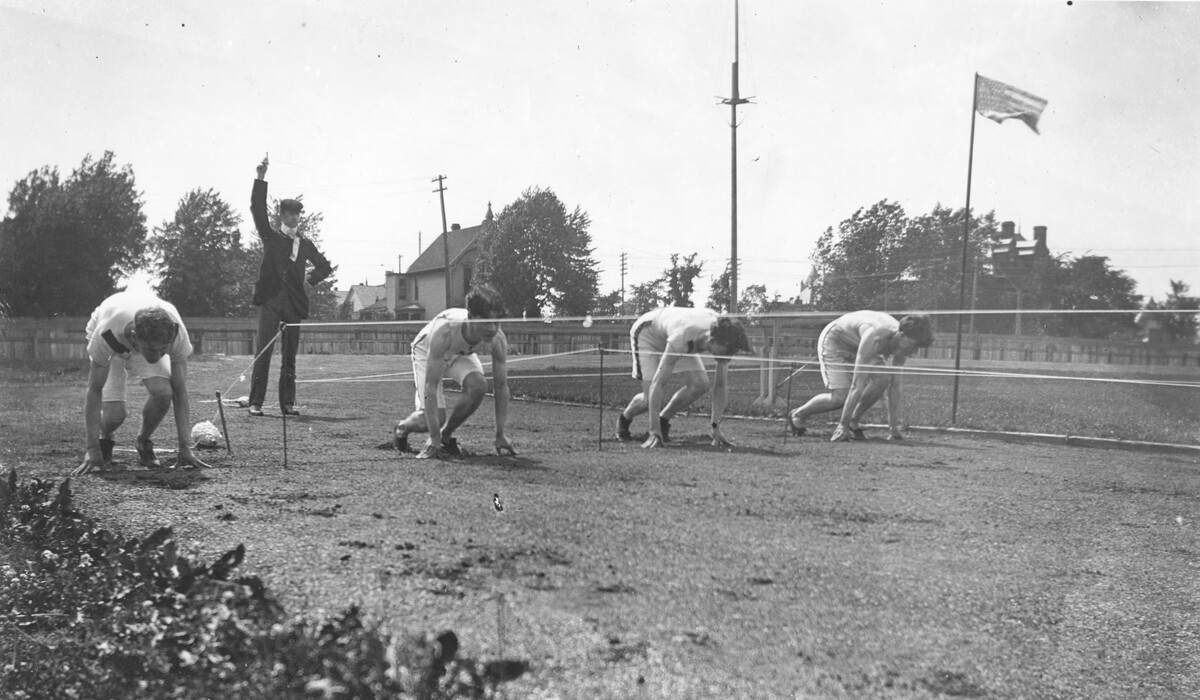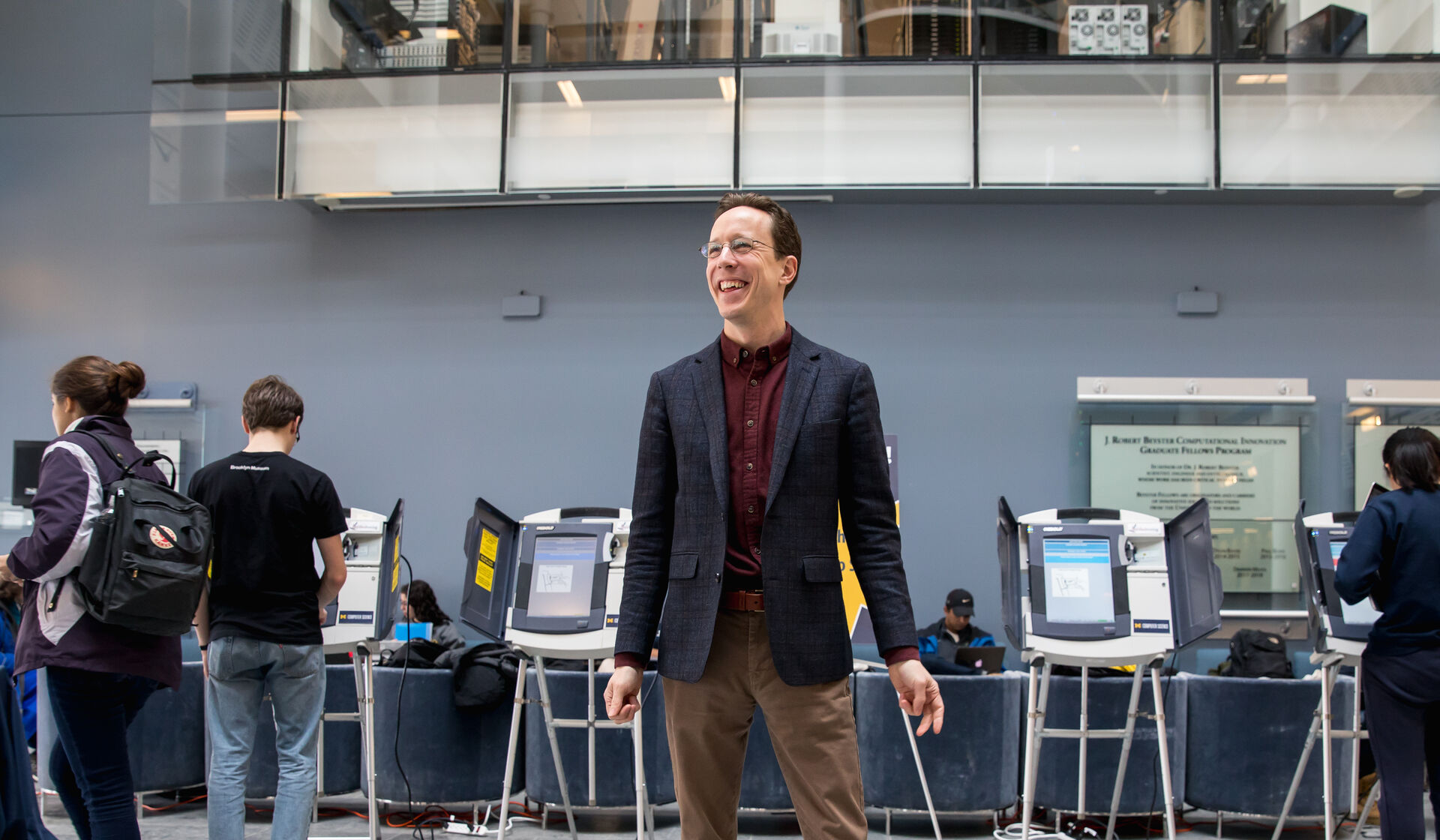Athletics are a cornerstone of the University of Michigan’s identity and business. The earliest iterations of these pastimes were a far cry from the cheering thousands, polished worldwide broadcasts, and cutting-edge stadiums and arenas we take as commonplace now. The nascent beginnings of the mid-19th century laid the foundations for today.
Prior to sports becoming organized at U-M, athletic endeavors were generally seen simply as sporadic entertainment, recreation, and matters of exercise. Wilfred B. Shaw, 1904, cites in his extensive record, “The University of Michigan, an encyclopedic survey,” that in U-M’s earliest days, popular individual sporting activities included jumping, weightlifting, and foot races. One old cat (a predecessor to baseball as we know it) and wicket (an off-shoot of cricket) were popular for team play. Fishing and hikes to and from Ann Arbor’s neighbor of Ypsilanti were also common.
There were no permanent facilities to speak of. The closest version to a gym was a military barracks that was converted into grounds for gym equipment including bars, poles, ropes, and swings in 1858. This “circus tent” had a big seasonal issue: it couldn’t be set up in the winter due to the frozen ground.
In 1860, students formed the Pioneer Cricket Club as the first organized sport in U-M’s history. Competing mainly within itself, the club played right in the middle of State Street. Given that State Street was a public, active thoroughfare, the situation was unsustainable as the sport grew. In 1865, for the first time, the University officially recognized a sport and budgeted grounds for a field of play dedicated to cricket — to the tune of $50, equivalent to about $937 in 2023.
A couple of years earlier in 1863, however, a movement began to introduce baseball proper to U-M. The University Baseball Club was formed in 1864 and was competing for state varsity championships by 1867. While baseball continued to grow, cricket’s popularity fell off into the 1870s.
Football’s first recorded appearance at U-M was in 1862, with The Chronicle student newspaper reporting on an all-first-year student team prevailing over their all-sophomore opponents. A Football Association was formed in 1873. The Wolverines’ first intercollegiate varsity football game came on May 30, 1878, with a victory over Racine College of Wisconsin.
Faculty and students formed the Board in Control of Athletics in 1893 as U-M’s first general athletics oversight body. That same year, a decades-long campaign for a permanent indoor athletic facility came to fruition with the opening of Waterman Gymnasium; demolished in 1977, it was located where the Dow Laboratory is now located.
Outdoor sports used vacant lots around the city, a playground area on campus, and the Ann Arbor Fairgrounds for much of their practice sessions and actual games. With the University constructing more buildings and Ann Arbor becoming more populated, space was needed for sports. In 1891, the University purchased land along South State Street expressly for athletic use, leading to the construction of the Athletic Field; it was known as Regents Field by 1894. Schembechler Hall now stands where these grounds once were
Other sports also made organized impacts at U-M in the earliest days: a boxing club formed in 1872, boating in 1873, and track in 1874. Tennis became a varsity sport in 1892, and outdoor track in 1895.
Most fittingly to close out this era, track athlete and U-M music student Louis Elbel, 1900, was inspired by a Wolverine football victory on Thanksgiving Day 1898 to compose “The Victors.”
Gregory Lucas-Myers, ’10, is the senior associate editor of Michigan Alum.





